Book I, Chapter 2: The Execution
List of Chapters | Previous Chapter
“The Werewolf of Mariahilf am Inn” was how the mad toll collector entered into Austrian folklore. But the bearded man who’d lived among the inhabitants of the sleepy Tyrolean village for nearly a decade was not, in fact, Baron Eckhart von Krems, the nobleman who had been dispatched to serve in this remote sinecure; but an imposter.
In the weeks following his capture, the cannibal was imprisoned in Moritz’s workshop, which had been emptied of its tools, tables, and benches. The blacksmith forged unbreakable fetters; and the beast was chained to iron loopholes nailed into the walls and ceiling. The loopholes were then double-bolted and reinforced with thick bands to prevent his escape.
Hermann’s father had not wanted the cannibal to be in such close proximity to his dwelling. But the aldermen of the village voted to detain him there in consideration of the fact that, from the end of spring to the middle of summer, the shadow of the crucifix atop the Mariahilf Church fell on Moritz’s workshop in the late afternoon hours.
Father Reuss gave strict orders that the monster was not to be maimed or harmed.
“I have written to the Holy See,” he confided to Moritz, “and requested that an inquisitor and exorcist be sent to Mariahilf. The Archbishop of Salzburg will be apprised as well, and when his representatives arrive they shall transcribe the trial’s proceedings. The inevitable execution of the wretch shall be registered among the civil rolls of Innsbruck and Vienna.
“Moritz, it will be up to you and Mother Ingrid to feed and water the creature. The town will provide you with food. And you shall be exempted from all taxes within the village for the remainder of your life. When this crisis is resolved, the town will collectively demolish your workshop and construct a new one for you.”
The Countess von Krems, who had been rusticating at her chalet overlooking the Walchensee, traveled in stages from Bavaria that she might gaze upon the individual claiming to be her cousin. On her arrival, the aged woman eased herself down from the carriage, planting her feet on a coarse wool rug that her attendants had spread out the carriage’s iron steps to receive her. She wore a dress of blue taffeta and held a scented kerchief to her nose.
The malefactor was dragged from the workshop and hauled before her. The blacksmith put one foot on the prisoner’s back as two men (on either side) pulled at the chained fetters around his wrists until his arms were fully extended.
“This man is not Eckhart,” the Countess declared. She glanced away, turning to her attendants, no longer able to bear the sight of der wilde Mann (savage). “My cousin was older than I,” she remarked. “He was clubfooted and gangly.”
“He was also delicious,” the prisoner grinned.
The Countess grew faint, and was helped back up into the carriage. As the door shut, the cannibal cried out, “Lecker, lecker!” (Yummy, yummy!)
It was presumed that Baron Eckhart von Krems had been waylaid and murdered a decade prior as he set out from Vienna to accept his commission. It was presumed that the killer stole the letters patent he bore, which had granted him plenipotentiary rights over the imperial toll house. The man had always been solitary, rarely mingling with the inhabitants of the village.
The exorcist arrived from Rome on the eve of Walpurgisnacht, accompanied by twelve discalced nuns of the Carmelite Order. Since no one knew the identities of the victims whom the beast had murdered in the toll house, and out of concern that their remains lay buried beneath floorboards or immured in the walls, the exorcist proclaimed that the building should not be burned down.
“Otherwise,” he averred, “those souls that died unshriven might spend an eternity in Purgatory.”
With holy water he aspersed every inch of the haunted toll house. Meanwhile, the nuns took up residence there and daily cleansed its precincts through prayer and meditation. At night they recited the Office of the Dead between repeated Ave Marias. Ex voto offerings arrived from as far away as Cologne and Rheims. Wax figurines, some shaped like babes in swaddling clothes, others like children praying—but others merely wax arms or legs—were placed throughout the rooms of the toll house, whose unfinished walls were black with the blood of the Baron’s victims.
Because the village was not large enough to accommodate the influx of civil and religious authorities who flocked to Mariahilf for the trial, a veritable city of pavilions and tented chapels sprang up from one end of the mountain valley to the other.
In the evenings, when Hermann listened in on the voices chanting vespers and compline, and when he caught sight of the pyx (containing the blessed host) being taken through the ranks of these servants of God clad in their surplices and scapulars, he thought that, so long as such reverend spirits abided in Mariahilf, no ill could come to the village.
One afternoon, Hermann returned home to learn that his father was consulting with the aldermen as to how they would restrain the prisoner during the trial. Oma Ingrid handed the boy a wooden bowl heaped with grilled sheep intestines and a chicken gizzard lumped on top.
“What’s this for?” the boy asked.
She yielded to him a two-pronged fork. “The monster has to be fed. Stand at the door and throw the food at him as you’ve seen your father do. Do not give him the bowl. And do not engage him in conversation. Otherwise he may try to enchant you.”
Hermann sullenly accepted the bowl and walked out the hut’s only door. He bent his steps to the workshop behind the dwelling, advancing quietly over the grass. But when he reached the door, he heard the chains rattling on the wood and sensed the werewolf knew he was coming. As he reached for the door, he heard the creature say in a conspiratorial voice, “Shhhh, it’s the boy.”
Hermann opened the door and saw in the shadows that man whom he had only ever known as Eckart the toll collector. The cannibal laughed at his nervousness. The boy stepped over the threshold and stopped. With the fork he flung the gobbets of flesh onto the planks. They landed at the prisoner’s feet. The cannibal greedily scooped up the pieces of meat, shoving them in his slavering jaws.
“Why does she cook them?” he asked. “It ruins the flavor. There’s never enough blood.”
Hermann’s hands were shaking and he let go of the fork as he flung out the last scrap of meat. It hit the wooden floor loudly and spun around, landing just out of the werewolf’s reach. Slowly, Hermann bent down to grab it.
The prisoner banged his heel on the tines and the fork flipped backwards. In a flash he snatched it by the handle.
Without turning his back on the beast, Hermann retreated until he stood at the door.
The werewolf spoke in a woman’s voice. “Why did you not eat me the night you slit my throat. Why did you not devour the flesh of my nursing pups?”
Hermann could neither move nor scream, paralyzed as he was with fear. The cannibal snarled until his lips retracted inhumanly, revealing his gums. When he spoke again, it was neither in the voice of a woman nor a man; but in the harsh guttural voice of something unholy.
“Little boy, little boy . . . I will chase you to the farthest reaches of the Earth. From the depths of hell, I shall howl at you. And I will eat your offspring—even as I ate my own whom you slew beneath the light of the full moon. Mmmm. Lecker, lecker!”
The werewolf flung the fork at Hermann’s head. The prongs lodged in the wall. The handle vibrated inches from the boy’s ear.
Hermann awoke in the bed his father had built for him—a bed he had almost outgrown. Moritz’s painting of the Virgin Mother adorned the lacquered headboard. The sheets and pillow were drenched in sweat. The boy’s father and grandmother stood over him.
“What happened?” Papa asked. “Your grandmother said she sent you to feed the madman. You passed out. Why was the fork stuck in the wall?”
The boy was too ashamed to tell what had really happened so he spun a lie. “When I was leaving, I tripped. The fork stuck in the wall. I hit my head on the floorboards.”
Oma Ingrid knew he was fibbing, but kept her peace and trimmed the wick of the candle in the lantern.
“Papa . . . ”
“What?”
“The day they found the dead lady, her body vanished from the cart at the same time Guido and his men discovered the werewolf.”
“What of it?”
Hermann’s grandmother folded her arms over her chest.
“I never met Mama. They say she abandoned us after Baron Eckart came to the village.”
Moritz rubbed his brow. “What are you getting at, boy?”
“What if the she-wolf I killed on the mountain was the same wolf that appeared immediately after—the one that danced in the moonlight? What if the crazy man in your workshop ate the she-wolf and has her soul inside of him? What if the dead lady and Eckhart are both the same werewolf?”
“You killed a she-wolf,” Moritz said. “The father wolf showed up, saw what you did to his mate, and chased you away. Humans don’t turn into animals. Animals don’t turn into humans. And neither produces offspring without a mate.”
“Witches do,” Oma Ingrid observed.
Moritz and Hermann turned to her.
“A witch possessed by the Devil can have intercourse with herself. And by this unnatural union she will produce his offspring.”
“Oh my God, Mama. He’s a boy. He doesn’t understand what you’re talking about.”
But Hermann, who had seen animals in rut and heard farmers discussing their stock, had vague notions concerning the processes of reproduction.
It had been decided that the children of Mariahilf am Inn were to be barred from the meeting house where the trial was to take place. An itinerant friar of the Franciscan Order volunteered to establish a makeshift school on a hill to catechize the children and instruct them in the rudiments of grammar. The old Franciscan was helped by one of the other boys from the village, whom Father Reuss had taught to read Latin.
Within six weeks the grand inquisitor arrived from Rome. He organized a conclave that laid out the protocols that were to govern the trial. By the middle of the summer, all of the interviews and sworn testimonies among the villagers had been collected and reviewed. The prisoner’s unextorted and candid confession was enrolled in the books. The trial itself lasted less than an hour. The sentence was death by hanging.
There had been some urgency about bringing the trial to a swift conclusion. The year was 1848 and all Europe was in ferment. Many of the delegates were unexpectedly recalled in the middle of trial to return to their temporal masters to confront the many insurrections and upheavals that were undermining the stability of the old order. Years later Hermann would wonder if these coincidental disturbances had contributed to the strange account of the Werewolf of Mariahilf am Inn being all but lost to history.
The condemned man was to be hanged at sundown from a gallows in the shadow of an ancient alpine chapel dedicated to the Virgin Mother. Pilgrims from all over Austria, Bavaria, and northern Italy gathered in the lowlands to bear witness.
A priest from Mariazell in Styria held a staff surmounted by an effigy of the Holy Mother and Child crowned and arrayed in pleated silks. The valley was filled with crucifixes and banners on tall poles.
Father Reuss delivered a sermon on the evils of witchcraft that lasted three hours. This was punctuated by a chorus of Benedictine monks chanting the Te Deum. And the crowd prayed fervently and wept. As the sun dipped beneath the mountains to the west, everyone waited with bated breath for the inevitable. The monster’s tumbril approached, drawn by two drays and preceded by fifty torchbearers. It progressed up a winding path that led to the scaffold.
Hermann stood between his father and grandmother close to the scaffold. Aunt Magda wept in her father’s arms.
The tumbril stopped and the werewolf was dragged down from the back of it. Someone pulled away his black hood. The bearded man blinked and grinned, arms bound behind him. Just above the knees of his trousers ropes had been tied tightly, since his bowels would empty once his body swung. This would keep the filth in his leggings. It was agreed to hang him on a six inches of rope, since the judgment was that he should not be granted a swift death by a snapped neck, but should suffer as his victims had.
He wore no shirt and many commented on his hirsute appearance, claiming it as proof that he was a man wolf. But Hermann overheard Aunt Magda whisper to her father, “He’s no more hairy than my dead husband was.”
The man stood on an unsteady wood block. From the top of the ladder leaning against the vertical beam, the blacksmith (as executioner) tightened the noose.
At any moment the condemned man could have kicked the block out from under himself and ended it all. But he seemed to relish being the subject of these proceedings.
Father Reuss stood on the grass beneath the scaffold. “I urge you to repent before you are called to your maker?”
The cannibal spoke quietly in that same feminine voice he had employed on that hateful afternoon when Hermann had met him. “Little boy, little boy, remember what I told you.”
“Oh my God,” Magda exclaimed. “That’s Ilse’s voice!”
Moritz and Oma Ingrid looked at each other in horror. Only those near the scaffold could hear what he had said.
At a signal from the priest the blacksmith kicked the block under his feet away.
The condemned man dropped and the noose tightened. As he swung, Hermann studied the foam at his lips. It reminded him of the she-wolf in her death throes on the mountain.
The only sound in the valley was the velvet flutter of the torches and the creak of hemp on the crossbeam. Suddenly, people began to gasp and point. The dying man’s eyes were reflecting the torchlight, like a wolf’s.
The priest from Mariazell fainted, and the staff bearing the effigy of the crowned Virgin and Christ Child onto the grass. The exorcist covered his mouth at this; and the monks exclaimed in horror.
Then a woman’s shrill scream pierced the twilight. One villager leaned forward and vomited. Panic spread through the valley, as the crowd fell to their knees, crossing themselves and tearing their hair.
Hermann turned his attention to the dead man swinging on the scaffold.
Just beneath the cannibal’s shaggy chest hung the six swollen teats of a nursing she-wolf.
The goatherd cut the body down and kicked it over the edge of the scaffold. With a single downward thrust, the blacksmith decapitated the werewolf with his spade. Two men lashed a rope around the corpse’s legs. And the men of the village gathered together for their final grim ritual, which the women, priests and nuns, would not be permitted to take part in.
Hermann and his father followed behind the men who dragged the body to a cursed pit beneath the alpine chapel, where a bonfire had already been kindled.
The monster’s body and severed head were cast into the flames. When the fire had consumed the flesh, the men shoveled into the pit until a mound was formed.
Atop the mound a second bonfire was built; and two dozen bottles of Weißgipfler wine—courtesy of the Countess von Krems—were distributed among the men of Mariahilf am Inn. For the remainder of that long summer night, the men drank and disported themselves, as they took turns spitting and pissing on the werewolf’s grave.

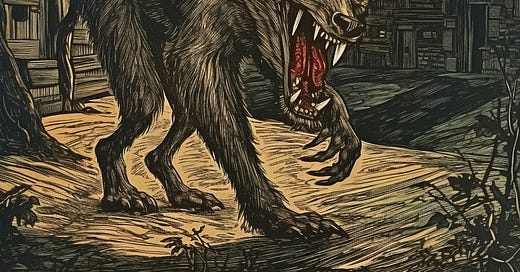



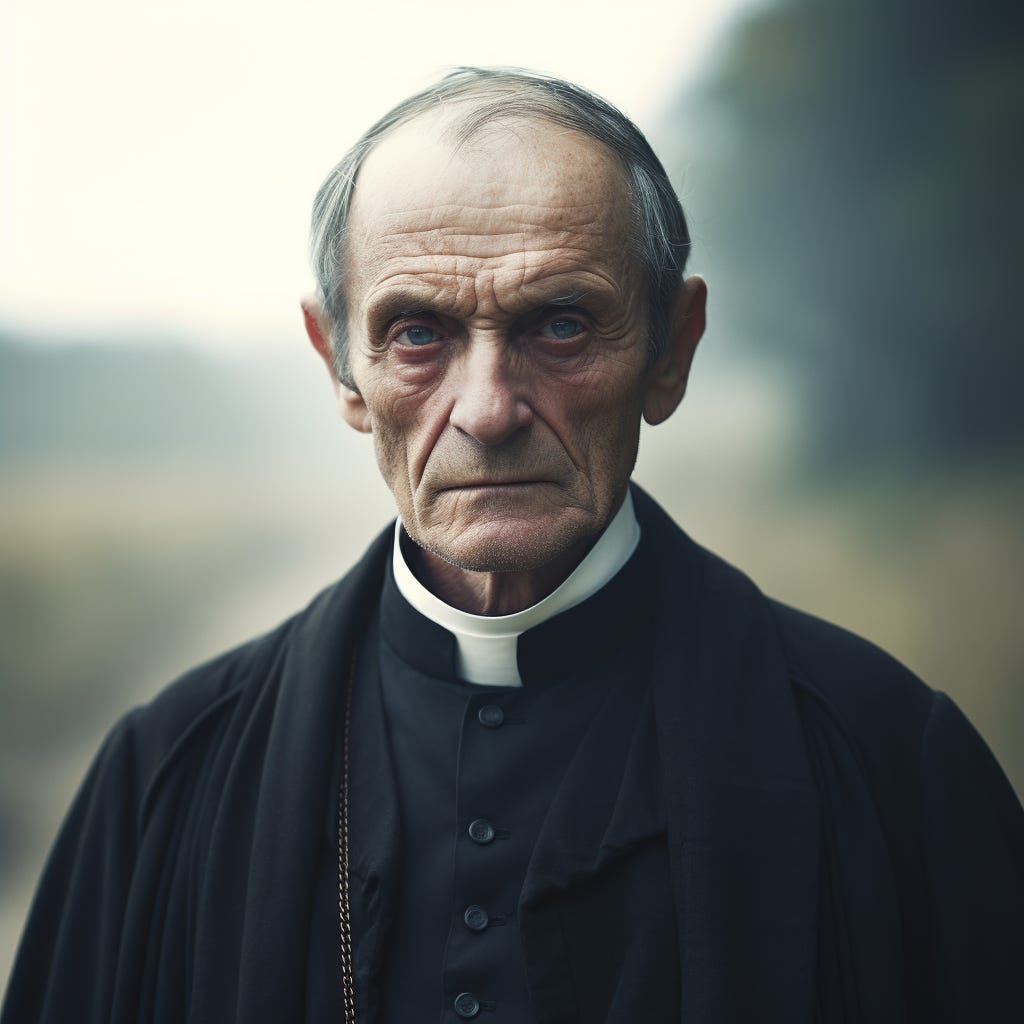
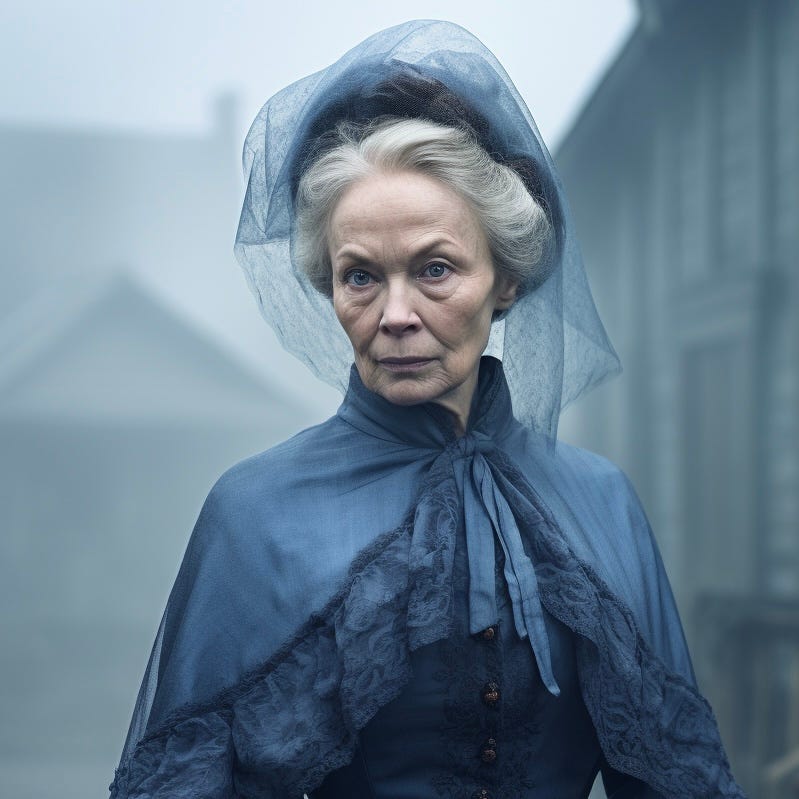

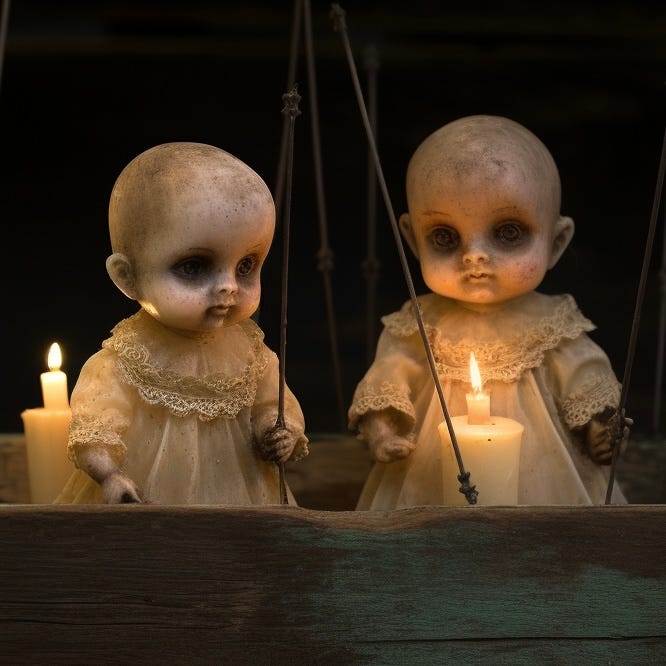
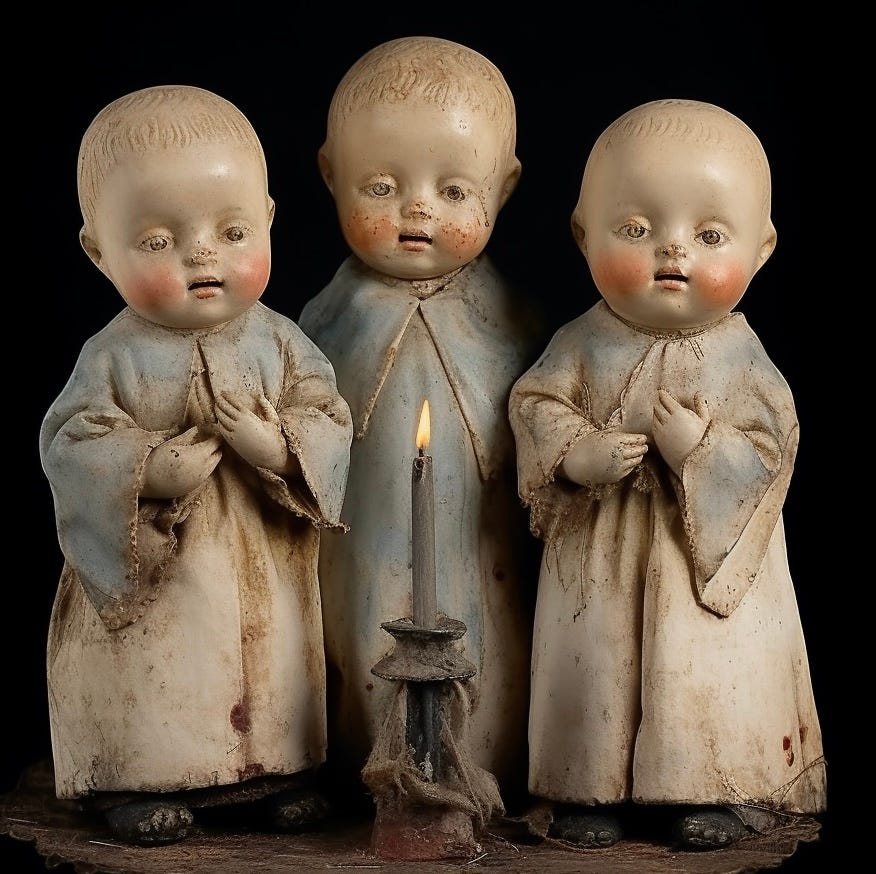


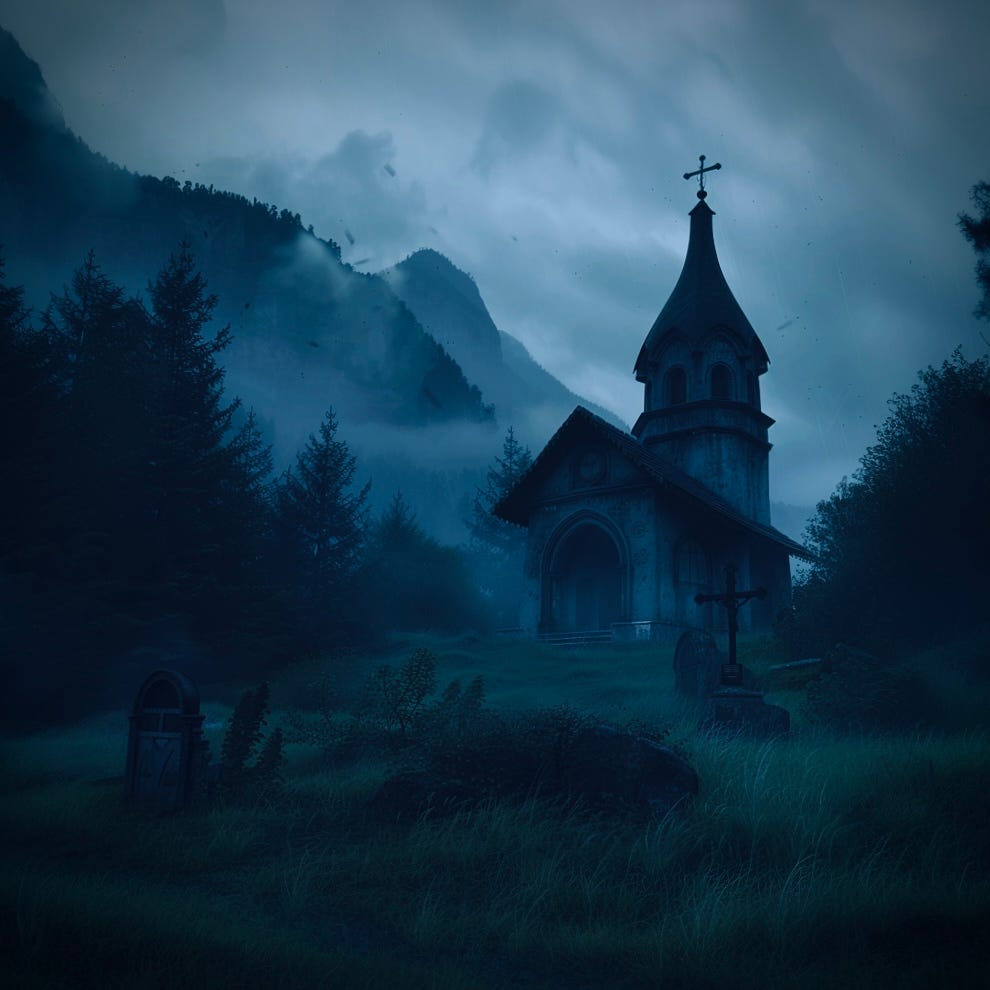
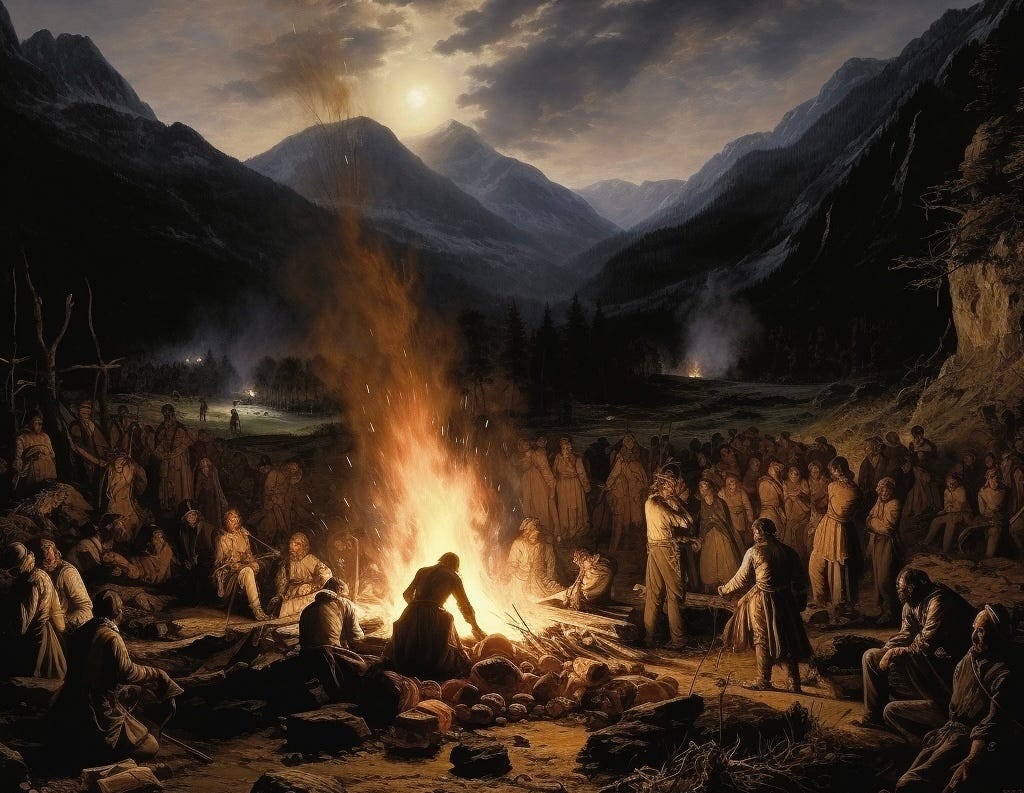
Daniel,
I am loving and appreciating the setting of this tale in such a real period of upheaval in Europe. The details (which on first reading I questioned) in language and setting have proved to be an unexpected educational opportunity. I am only commenting at this time after spending time reading again and looking up unfamiliar references (particularly of Catholic and pagan ritual, and locations). On a quick read, many readers would get a good story but lose a lot of depth!.In the writing, that must be critically important to you, as this part is chock full of informative detail. Ready for the next I hope.
Absolutely incredible